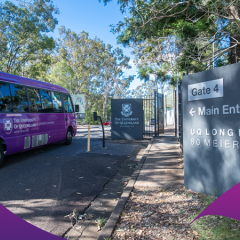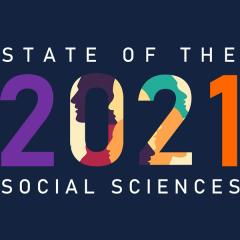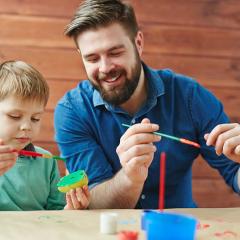ISSR’s Professor Paul Memmott, in partnership with a national multi-disciplinary team of researchers and curators, took the Wild Australia Show 1892-93 back on the road, commencing with the Grafton Regional Gallery. The photographic exhibition of this historic travelling Aboriginal performance was originally held at The University of Queensland’s Anthropology Museum in 2015-16. Two of the exhibition’s originators, Paul Memmott and Michael Aird, had since formed a larger research project to both share and gather information that advances understanding of this significant piece of Aboriginal Australian history. The project is supported by an Australian Research Council Linkage grant, with collaborators from The University of Queensland, Australian National University, Museum Victoria, Queensland Museum and State Library of New South Wales.
The Grafton exhibit, which ran from May 12 – June 10, is a first step in a travelling version of the UQ exhibition which will form a kind of rolling dialogue with visitors. This travelling research tour seeks to engage with descendants of troupe members in the recovery of their ancestral history. By growing the historical evidence about this troupe, the researchers aim to reconstruct social and political events surrounding the tour such as the level of performer agency and the state of violence at the time. The project team also expects to understand the ideology underpinning the act and how this has reverberated to today.
The Wild Australia Show was conceived by journalist, politician and controversial entrepreneur, Archibald Meston, as a travelling choreographed troupe of 27 Aboriginal people conscripted from the Queensland frontier. The troupe was taken on a national touring ‘Wild West Show’, performing in Brisbane, Sydney and Melbourne during 1892-93. Troupe members were collected from tribal groups in the Northern Territory, Queensland and the Torres Strait.
The Wild Australia Show emerged at a critical time in colonial history when the perception of Aboriginal people on the frontier was shifting from one of a threatening population justifiable of extermination, to that of a ‘subject’ people requiring protection.
Meston’s vision for the Wild Australia Show was to be a demonstration of the superior physique and skills of the “wild” Aborigines, presented for the last time because of theories of likely racial extinction. During the troupe’s tour to Sydney and Melbourne, striking portraits of the performers were taken by three leading Australian studio photographers: Charles Kerry and Henry King (Sydney), and John W. Lindt (Melbourne). These photographs were traded through global networks and are now held by museums, libraries and private collections around the world, where they continue to communicate ideologies about Australian Indigenous people to international audiences. It is these historic photographs, along with the current research findings, that make up the Wild Australia Show travelling exhibition.
For upcoming exhibitions, please contact Linda Thomson, Aboriginal Environments Research Centre, on (07) 3365 3660.



